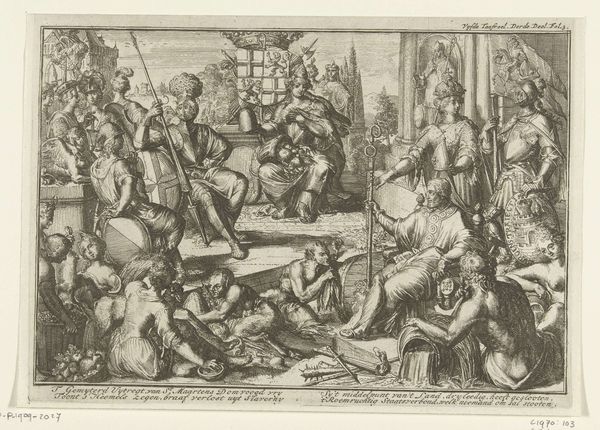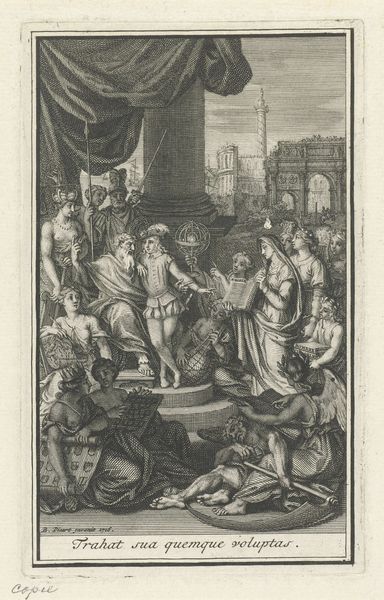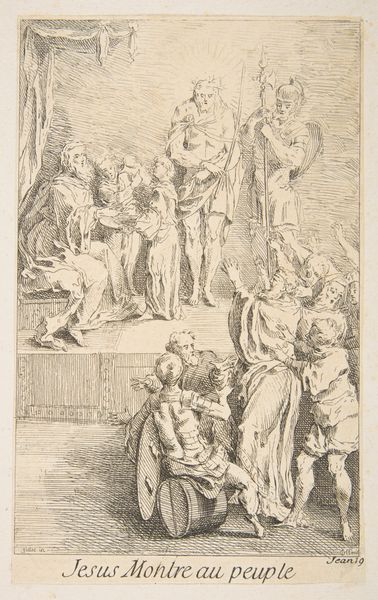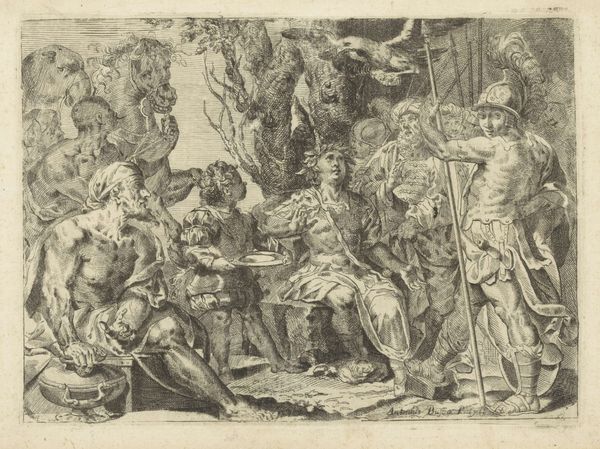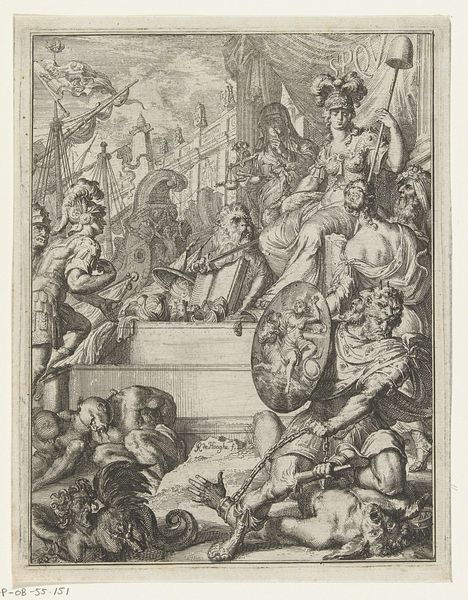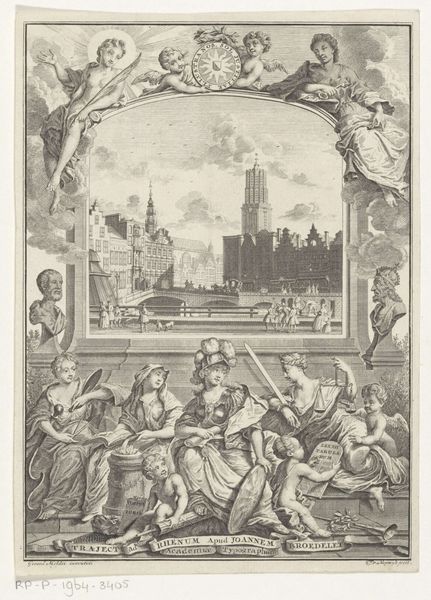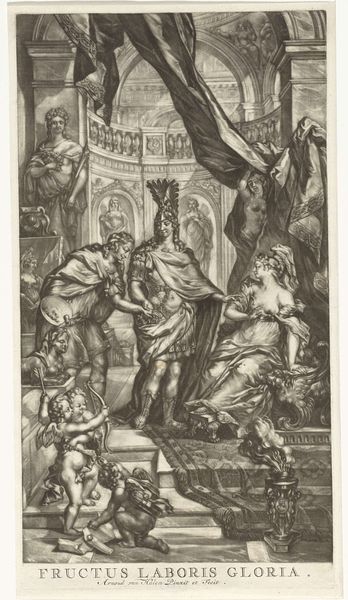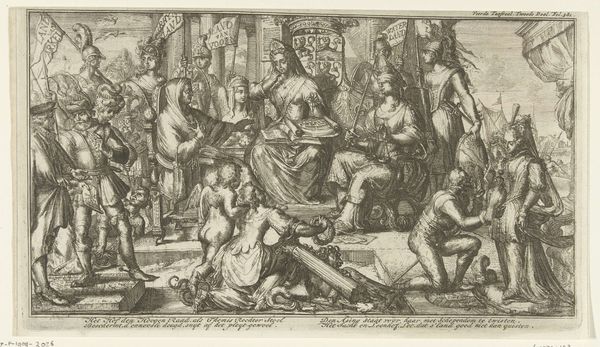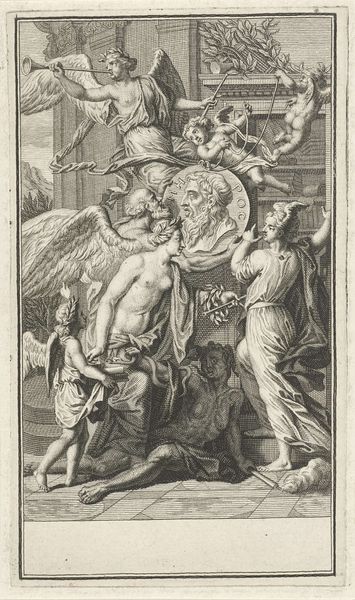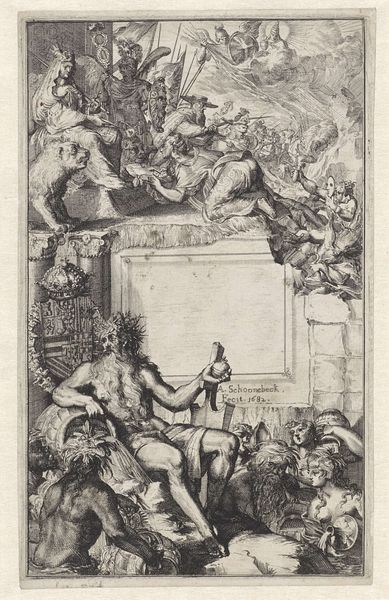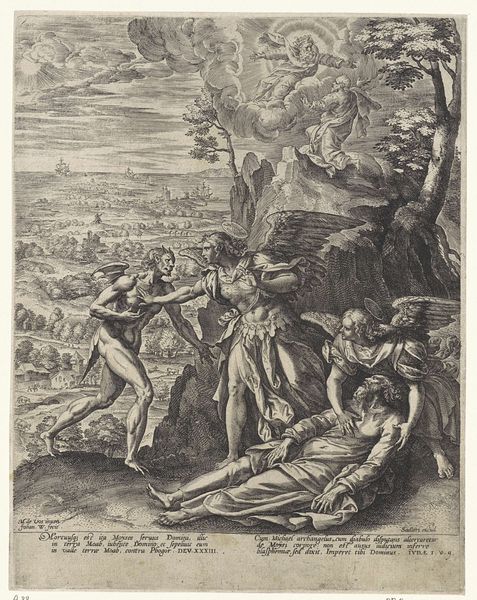
engraving
#
allegory
#
baroque
#
pen drawing
#
figuration
#
form
#
line
#
history-painting
#
engraving
Dimensions: height 206 mm, width 152 mm
Copyright: Rijks Museum: Open Domain
Curator: Alright, let’s delve into this fascinating engraving: "Allegorische voorstelling van de (zee)handel," which roughly translates to "Allegorical Representation of (Maritime) Trade." It was created between 1655 and 1708 by Romeyn de Hooghe. Editor: Whoa. Okay, my first thought is… intense. It's packed with so many figures, symbols… it almost feels claustrophobic, yet there's a definite grandeur to it, a certain drama played out in monochrome. It feels weighty somehow, laden with significance. Curator: Indeed. De Hooghe was a master of imbuing images with layers of meaning. Look at the central figure, possibly representing the Dutch Republic, holding the caduceus, a symbol associated with commerce, and consider the figures at her feet, presenting offerings, symbolizing resources from different parts of the world. This tells a story of trade, influence, and even dominion. Editor: So, a sort of… victory lap of global trade? The central figure feels almost regal, surveying this bounty. I notice the native people – they look more like trophies, than equal trading partners. The Baroque love of pomp and circumstance seems to underscore power dynamics, don’t you think? Curator: Exactly. The "triumph" motif was common in Baroque art to express authority. Notice the crowded scene, and its visual cues – the naval vessels and exotic figures are not just about the visual elements, but cultural projections of a society that saw itself as at the center of global exchange. Editor: And this is why visual culture from this era remains so provocative. There’s incredible artistic skill at play, but the narratives reflect some pretty uncomfortable realities about colonialism and cultural bias. Curator: Precisely. What looks at first glance like a celebration is in fact more complicated upon deeper scrutiny, an invitation to reflect on that legacy, its cultural memories and their long shadows, captured so neatly in the pen lines of de Hooghe. Editor: Yeah, this engraving makes you think about the stories we tell ourselves, and which ones get left out of the picture. Quite powerful, actually, in its uncomfortable way.
Comments
No comments
Be the first to comment and join the conversation on the ultimate creative platform.

